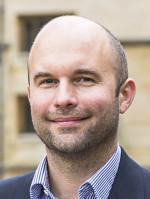
Professor of Molecular Informatics
Currently also: Chief Informatics and Technology Officer (CITO) at Pangea Botanica, London/UK and Berlin/Germany
Previous positions:
Director Digital Chemistry at NUVISAN Berlin
Associate Director Computational ADME and Safety (Clinical Pharmacology & Safety Sciences/Data Science and Artificial Intelligence - CPSS/DSAI) at AstraZeneca Cambridge
Co-founder of Healx Ltd.
Co-founder of PharmEnable Ltd.
- Committed to developing new life science data analysis methods (AI/ML/data science) and their application, primarily related to chemical biology, drug discovery and in silico toxicology
- Expertise comprises data ranging from chemical structure and gene expression data to phenotypic readouts and preclinical information, applied to both efficacy- and safety/tox-related questions
- Collaborating with academic research groups, as well as pharmaceutical, chemical, and consumer goods companies (Eli Lilly, AstraZeneca, GSK, BASF, Johnson&Johnson/Janssen, Unilever, ...)
- Co-founder/founding CTO and current SAB member of Healx Ltd. (data-driven drug repurposing for rare diseases, and beyond); co-founder of PharmEnable Ltd.; SAB member of Lhasa Ltd. (toxicology and metabolism prediction) and Cresset Ltd.
- Coordinator of the Computational & In Silico Toxicology Specialty Section of the British Toxicology Society (BTS)
- Steering Committee Member of the Cambridge Alliance on Medicines Safety (CAMS)
- Currently leading a group of ca. 15 PhD students, postdocs, project students and visitors at the Centre for Molecular Informatics at the University of Cambridge, https://www-cmi.ch.cam.ac.uk/centre-molecular-informatics
Publications
Insights into Drug Cardiotoxicity from Biological and Chemical Data: The First Public Classifiers for FDA DICTrank.
(2023)
(doi: 10.1101/2023.10.15.562398)
MAVEN: compound mechanism of action analysis and visualisation using transcriptomics and compound structure data in R/Shiny.
– BMC Bioinformatics
(2023)
24,
344
(doi: 10.1186/s12859-023-05416-8)
Editorial overview: Artificial intelligence (AI) methodology in structural biology
– Current opinion in structural biology
(2023)
82,
102676
(doi: 10.1016/j.sbi.2023.102676)
From Pixels to Phenotypes: Integrating Image-Based Profiling with Cell Health Data Improves Interpretability
(2023)
(doi: 10.1101/2023.07.14.549031)
Merging Bioactivity Predictions from Cell Morphology and Chemical Fingerprint Models Using Similarity to Training Data
– Journal of Cheminformatics
(2023)
15,
56
(doi: 10.1186/s13321-023-00723-x)
Explaining Blood-Brain Barrier Permeability of Small Molecules by Integrated Analysis of Different Transport Mechanisms
– Journal of Medicinal Chemistry
(2023)
66,
7253
(doi: 10.1021/acs.jmedchem.2c01824)
Prediction of Compound Plasma Concentration-Time Profiles in Mice Using Random Forest.
– Mol Pharm
(2023)
20,
3060
Benchmarking causal reasoning algorithms for gene expression-based compound mechanism of action analysis.
– BMC bioinformatics
(2023)
24,
154
(doi: 10.1186/s12859-023-05277-1)
Deep generative models for 3D molecular structure.
– Curr Opin Struct Biol
(2023)
80,
102566
(doi: 10.1016/j.sbi.2023.102566)
Using Transcriptomics and Cell Morphology Data in Drug Discovery: The Long Road to Practice.
– ACS Medicinal Chemistry Letters
(2023)
14,
386
- <
- 2 of 42
